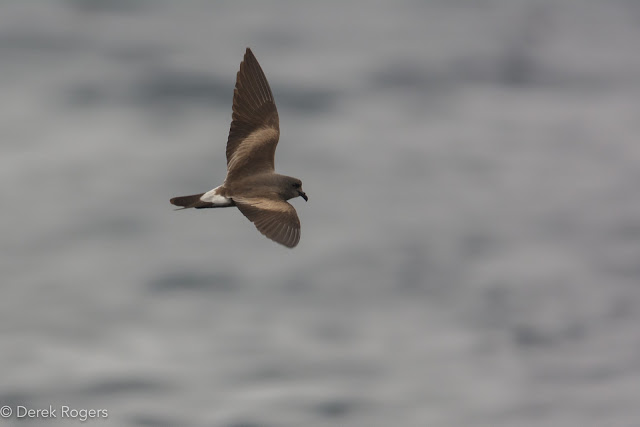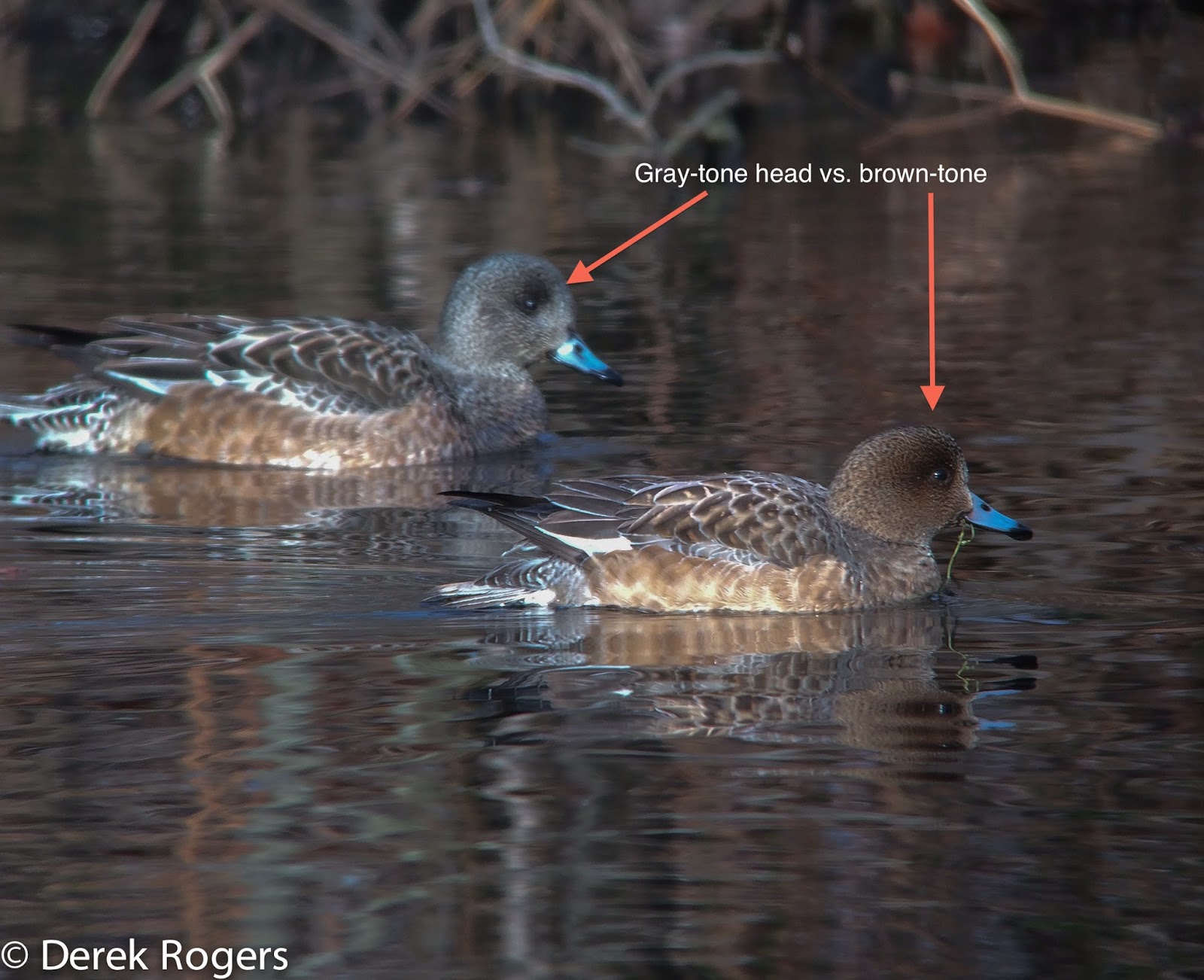Leach's Storm-Petrels in New York State
We took advantage of a favorable offshore window in early June and decided to do an overnight pelagic fishing trip out to the deep water south of the continental shelf break. John Shemilt, Angus Wilson and I left Shinnecock Inlet on the morning of June 3, 2016. We were just on the heels of a fun day trip the previous weekend, 5/29, where we encountered good diversity and hoped to repeat our success. We set CLIII's autopilot due southeast of Shinnecock toward Ryan and McMaster Canyon (aka The Claw) where we planned on searching for a noteworthy temperature break in and around the deep water at the bottom of the continental shelf edge at 1000 fathoms. It was in this area that we would encounter record breaking numbers of Leach's Storm-Petrel while in the middle of a midnight feeding frenzy.
Most Leach' Storm-Petrels breed in the northwest and northeast Atlantic where they nest within burrows on rocky islands. The closest colonies to offshore New York waters are off the coast of Massachusetts and Maine but nesting ranges north to Labrador. Adults take turns incubating/parenting and will travel long distances to sea, sometimes for days, prior to returning to their respective burrows. Most of the offshore NY effort data compiled thus far shows a strong connection with Leach's and deep water at the edge of the continental shelf break and beyond. While Leach's are commonplace in deep water it is quite unusual to see them up on the shelf in shallower water. As if foreshadowing our Leach's themed trip, we encountered two of them on 6/3 in roughly 280 feet water at N 40 68.623, W 71 30.950, much further up the shelf than we typically see them.
As expected, Leach's numbers increased as we approached the top of The Claw and were clearly outnumbering Wilson's Storm-Petrels, the inverse of our 5/29 trip just a week prior where Wilson's were the dominant storm-petrel species (162 WISP vs. 77 LESP). As nightfall approached we decided the south end of the The Claw near the 1000 fathom line was as good a spot as any to get some rest.
It was a still, moonless night and like every overnight pelagic I was in and out of sleep, half awake, but in a constant state of sporadic dreaming. I woke up shortly after midnight after hearing what I thought was a calling Leach's Storm-Petrel. A few seconds passed and I heard another. I crawled out of the lower cabin and saw John standing there. "There are Leach's everywhere." Leach's Storm-Petrels were calling in every direction. We did not have the boat lights on (only the dim transom and stern lights for safety purposes). I grabbed my high powered LED flashlight and panned across the motionless sea to find swarms of Leach's Storm-Petrels 360 degrees around the boat as far as the light could penetrate the darkness. The upper water column was stacked with tiny translucent baitfish and copepods and it occurred to us that we were in the middle of a Leach's feeding frenzy. It wasn't long before Leach's began flying into the boat and bouncing off of our outriggers. We conservatively estimated 200 individuals but this was likely a gross underestimate given the magnitude of the spectacle. There is just no real safe way to count at night. After 90 minutes of witnessing the event, and helping a couple of birds back to sea, we finally called it a night. The non-stop calling continued throughout the night and I could barely sleep with all the excitement.
The next morning yielded continued high numbers of Leach's in our man made chum slick but nothing close to the spectacle of last nights natural feeding frenzy. The surface of the boat had several areas stained with red Leach's Storm-Petrel excrement, possibly krill or another similar copepod. Our overall Leach's tally, including the midnight madness, was 388 individuals within a 23 hour period. Our Wilson's tally was 224. Just how many Leach's were out there on the night of June 3rd? If we could have quickly turned on the sun I wouldn't at all have been surprised to see upwards of one thousand birds. The amount of life within the upper surface was stunning and it was remarkable to witness this nocturnal feeding frenzy while listening to their playful, yet haunting calls. A link to a 47 second compiled sound clip can be accessed at my soundcloud page.
Most Leach' Storm-Petrels breed in the northwest and northeast Atlantic where they nest within burrows on rocky islands. The closest colonies to offshore New York waters are off the coast of Massachusetts and Maine but nesting ranges north to Labrador. Adults take turns incubating/parenting and will travel long distances to sea, sometimes for days, prior to returning to their respective burrows. Most of the offshore NY effort data compiled thus far shows a strong connection with Leach's and deep water at the edge of the continental shelf break and beyond. While Leach's are commonplace in deep water it is quite unusual to see them up on the shelf in shallower water. As if foreshadowing our Leach's themed trip, we encountered two of them on 6/3 in roughly 280 feet water at N 40 68.623, W 71 30.950, much further up the shelf than we typically see them.
 |
| Leach's Storm-Petrel - South of Ryan and McMaster Canyons at 1000 fathoms |
As expected, Leach's numbers increased as we approached the top of The Claw and were clearly outnumbering Wilson's Storm-Petrels, the inverse of our 5/29 trip just a week prior where Wilson's were the dominant storm-petrel species (162 WISP vs. 77 LESP). As nightfall approached we decided the south end of the The Claw near the 1000 fathom line was as good a spot as any to get some rest.
 |
| Leach's Storm-Petrel that landed in the boat. Note forked tail but with undivided white rump patch. |
It was a still, moonless night and like every overnight pelagic I was in and out of sleep, half awake, but in a constant state of sporadic dreaming. I woke up shortly after midnight after hearing what I thought was a calling Leach's Storm-Petrel. A few seconds passed and I heard another. I crawled out of the lower cabin and saw John standing there. "There are Leach's everywhere." Leach's Storm-Petrels were calling in every direction. We did not have the boat lights on (only the dim transom and stern lights for safety purposes). I grabbed my high powered LED flashlight and panned across the motionless sea to find swarms of Leach's Storm-Petrels 360 degrees around the boat as far as the light could penetrate the darkness. The upper water column was stacked with tiny translucent baitfish and copepods and it occurred to us that we were in the middle of a Leach's feeding frenzy. It wasn't long before Leach's began flying into the boat and bouncing off of our outriggers. We conservatively estimated 200 individuals but this was likely a gross underestimate given the magnitude of the spectacle. There is just no real safe way to count at night. After 90 minutes of witnessing the event, and helping a couple of birds back to sea, we finally called it a night. The non-stop calling continued throughout the night and I could barely sleep with all the excitement.
 |
| Close up of Leach's Storm-Petrel showing the peaked forecrown and obvious tubenose. Same individual as photographed above. |
 |
| Leach's Storm-Petrel, photo by John Shemilt. |



Comments
Post a Comment